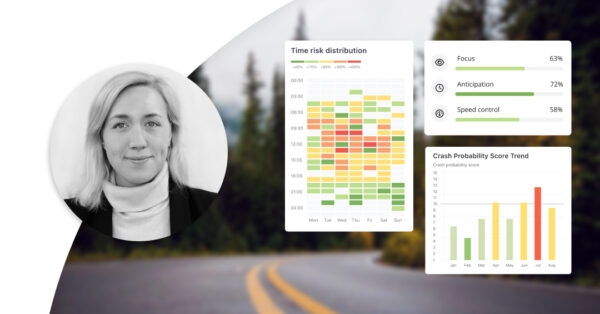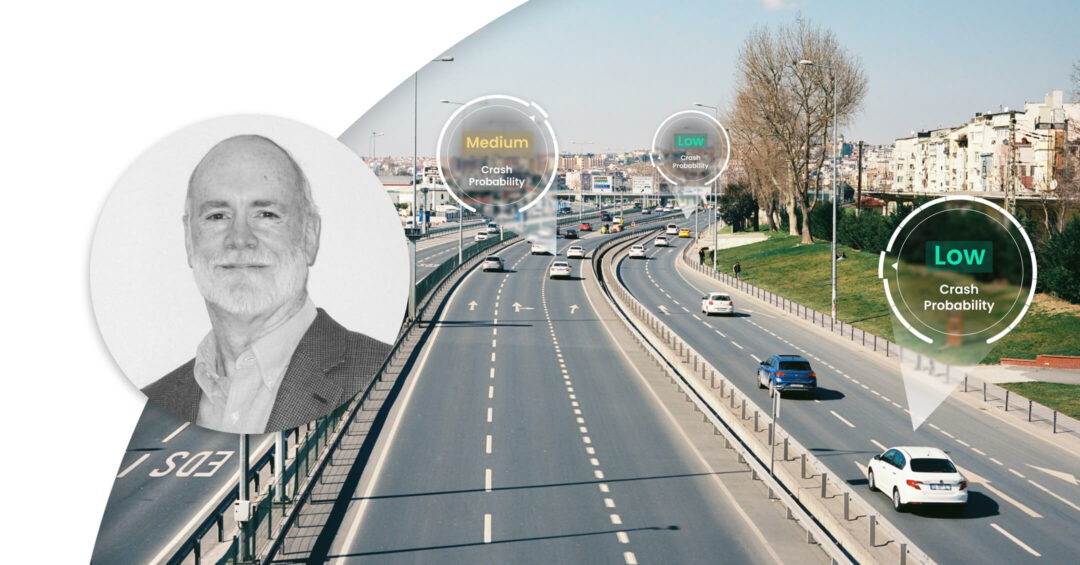
Can AI in motor insurance influence safe driving?

Road safety is a pressing public health challenge. Globally, road traffic crashes cause approximately 1.3 million preventable deaths and up to 50 million injuries each year. While there are action plans all over the world to help reduce road deaths and injuries, there is little attention on one significant contributory factor: driver attitude. By using artificial intelligence (AI) in motor insurance to measure driver attitude and price premiums according to risk, the industry can play a significant role in improving road safety.
Road safety is everyone’s responsibility
The United Nations (UN) has a Global Plan to halve road deaths and injuries by 2030. The Decade of Action for Road Safety 2021-2030 emphasizes the importance of a holistic approach to road safety and calls for continued improvements in the design of roads and vehicles; enhancement of laws and law enforcement; and provision of timely, life-saving emergency care for the injured.
Of course, ANY action to reduce road crashes must be welcomed, but there’s a lack of focus on the role of driver attitude in road safety, and how we can influence it. The UN calls for a range of sectors to be involved, not just transport and health, and acknowledges that the private sector has a tremendous influence on road safety. At Greater Than we’re passionate about highlighting the significant contribution that the insurance sector can make when it comes to incentivizing safer driving attitudes.
Why driving attitude matters
The relationship between driver attitude and road safety is vastly under recognized. Attitude towards risk, focus, anticipation, and speed are all of massive consequence to crash probability and severity. For example, varying speed unnecessarily because of distracted driving, “chasing” the next green traffic light, or leaving an unsafe following distance, resulting in harsh braking.
Fortunately, with AI in motor insurance, it’s possible to measure driving attitude and price premiums according to risk. And, with transparent insights, it’s easy for drivers to see how their decisions affect their risk level and their insurance pricing.
The power of AI in motor insurance
AI in motor insurance is transforming risk understanding. Instead of estimating driver risk levels based on an analysis of past events, AI analyzes risk in real-time to predict future outcomes. This means that motor insurers can predict future losses before they happen, strengthening risk selection, policy validation and loss control.
For insurers, one of the major advantages of AI is having a concrete overview of what their future claims costs will look like, before their customer has actually made a claim. This provides a 12- to 18-month lead compared with other risk calculation models.
Quashing the idea that driving is an accepted risk
Unfortunately, driving has become an accepted risk. It’s considered inevitable that fleet companies will experience a certain percentage of crashes every year. And, it’s down to insurance companies to put a price on that figure.
At the driver level, knowing there is an accepted level of risk inadvertently permits a blasé attitude to driving behavior. It’s only when fleets and insurance companies start measuring drivers individually that they can be transparent about the driver’s individual risk level and – more importantly – do something about it. Change will only happen with incentives or consequences.
Leveraging the value of AI in motor insurance for road safety
AI in motor insurance uncovers added value from connected data. With new crash probability insights, insurers can hold open conversations with customers about how to manage and mitigate risk. Because it’s based on current driving performance, AI can identify changes in risk level promptly, ensuring commercial customers can take action to prevent crashes from happening.
Often, drivers don’t realize they are considered “high-risk”, and need it highlighting for them. Equally, drivers don’t know how to change their risk level until they’re given guidance. With AI in motor insurance, insurers benefit from deep risk insights that they can share with customers and can incorporate into programs that provide feedback or use gamification to influence safer driving.
Why precision pricing matters in road safety
Pricing risk at a group level is standard practice in commercial motor insurance. But it does nothing to contribute to safer roads. Precision pricing means that insurers price premiums based on actual risk level, incentivizing organizations to reduce risk in exchange for lower premiums.
A huge challenge in motor insurance is that, traditionally, underwriting and driver risk analysis has been based on outdated models and biased historical data, with little regard for individual driving performance. With AI in motor insurance, it’s possible for insurers to predict crashes before they happen, facilitating the fine-tuning of traditional pricing models or the development of entirely new usage-based products.
How AI in motor insurance works
At Greater Than, we work with motor insurance companies globally to uncover new AI-generated driver risk insights. All we need to get started is 1km of GPS data, which can be easily shared with us via an API – dashcam, connected vehicle, telematics device etc.
We convert the GPS data into a DriverDNA for every trip, and compare it to a database of over 7 billion real-life trips, enabling us to match patterns and rapidly predict crash probability. Because we harmonize our data, it means insurance companies can compare crash probability across customers or an entire portfolio, regardless of driving safety program used and irrespective of vehicle type, size, location, or fuel type.
To find out more about how AI in motor insurance can help your insurance company to address and improve road safety, get in touch.



